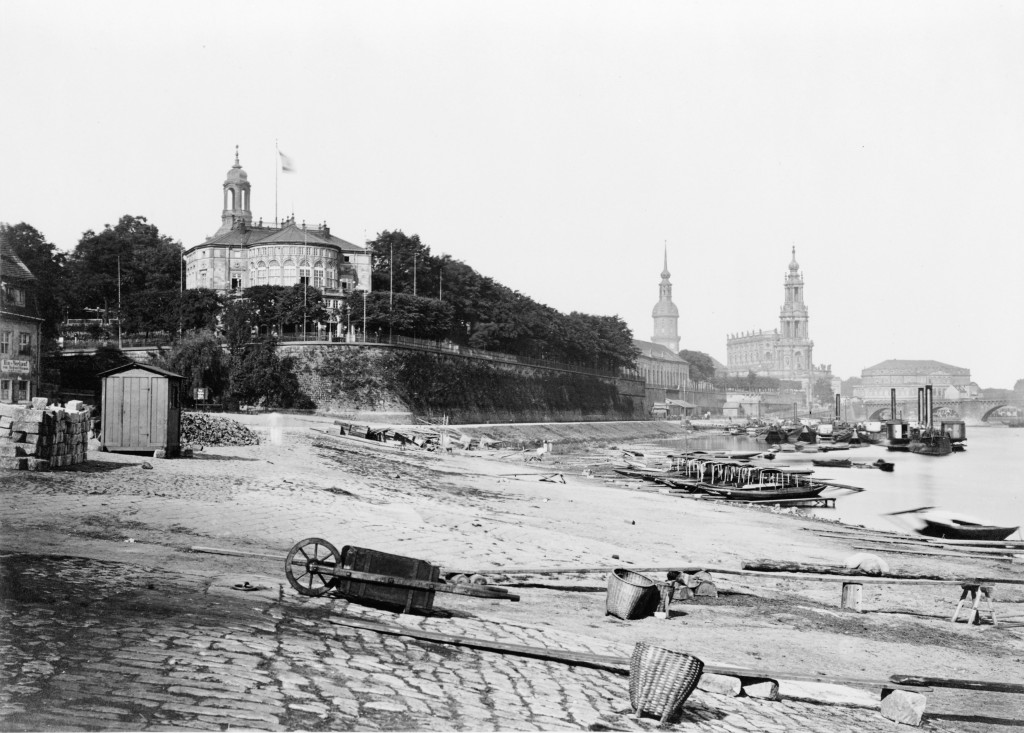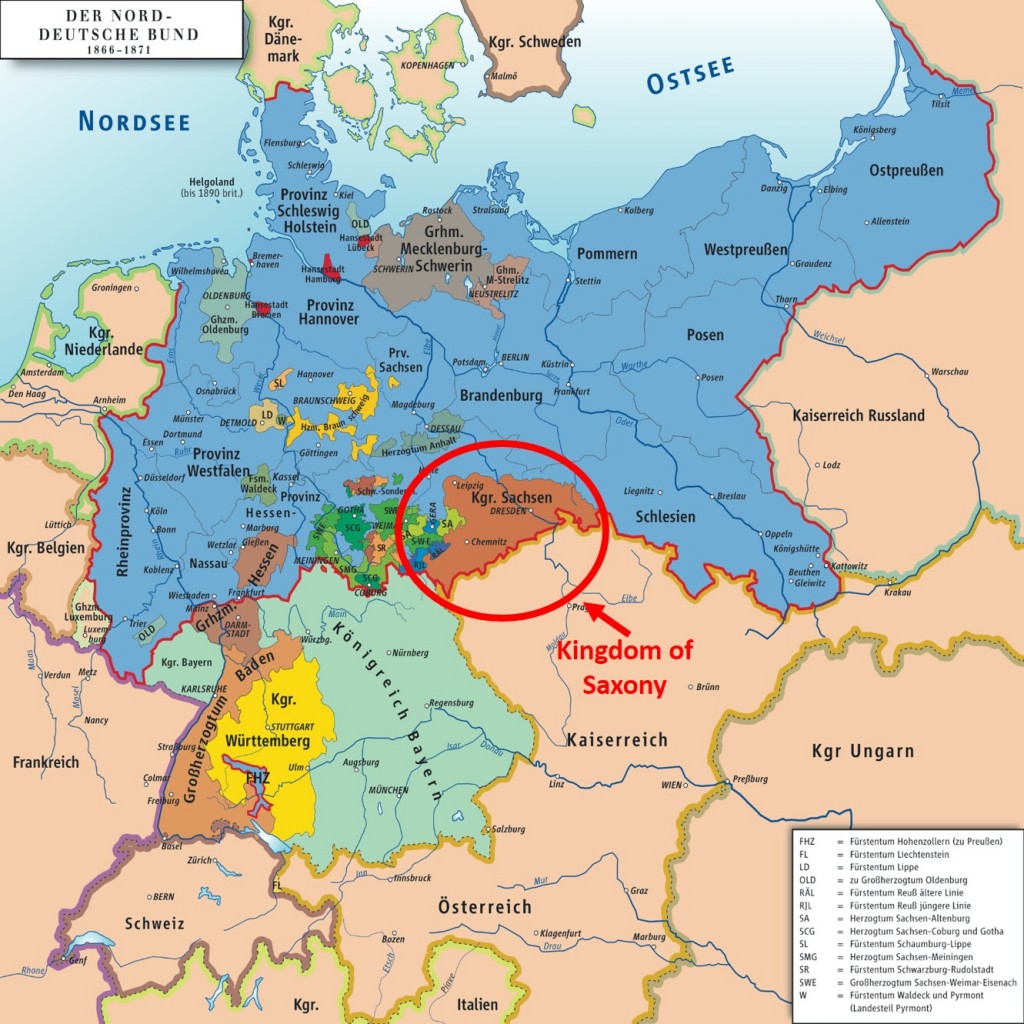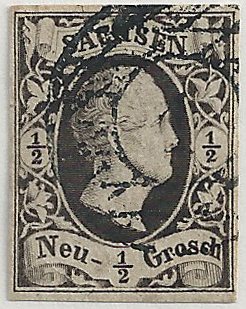Fast Facts
Region: Germany / Poland Area
Group: German States
Classification: Kingdom
Prior Regime: Electorate of Saxony, State of the Holy Roman Empire
Key Dates:
1806, Dec 11 – Kingdom of Saxony proclaimed by France
1815, May 18 – Kingdom of Saxony forced to give up 2/3rds of it territory to Prussia
1866 – Saxony joins the North German Confederation
1871, Jan 18 – Kingdom of Saxony joins the newly formed German Empire
1918, Nov 13 – Kingdom of Saxony becomes the Free State of Saxony in the German Republic
Following Regime: Empire of Germany
Scott Catalogue: (German States, Saxony) #1-20
Pick Catalogue: (Germany, Saxony) #s946-s953
History

The first king of Saxony was the former Elector of Saxony of the HRE, Fredrick Augustus I, of the House Wettin. King Fredrick ruled from 1806 to 1827 when he was succeeded by his brother Anthony of Saxony. The House Wettin continued as the royal family throughout the existence of Saxony.
Throughout much of the 1800’s, Saxony developed into a very strong industrial region, and became the birthplace of the Germany Workers Labor Movement, which was the foundation for the German labor unions.
As Prussian power grew, war eventually broke out in 1866 with Austria, in what is commonly called the War of Seven Weeks. The newly formed Kingdom of Italy joined with Prussia, which put Austria at a distinct disadvantage because it needed to fight on two war fronts in the north and south of the Empire. The Kingdom of Saxony sided with Austria, as the various German states took different sides of the conflict. The Prussian/Italian alliance won the war, and with the spoils of war went to the victors. Venetia was ceded to Italy, and Prussia consolidated all of the fractured German States in the north, including the Kingdom of Saxony under the North German Confederation.
A few years later, in 1870, The Kingdom of Prussia and the North German Confederation, along with several powerful states of southern Germany went to war with France in the Franco-Prussian War. The conflict lasted only 10 months and the German victory ultimately brought about the unification of Germany, creating the German Empire under King Wilhelm I of Prussia on 18 January, 1871. The Saxony, joined the German Empire, and remained as a subordinate kingdom to the Emperor until the defeat of Germany in World War I. After the war, Saxony became a Free State within the German Republic.

Stamps
 ALBUM
ALBUM
The first stamp issued by the Kingdom of Saxony in 1850 was similar in design to the early numeral stamps of Baden and Bavaria. This issue is quite rare and costly.
In 1851, a 3 pfennig (pf) stamp was issued featuring the Saxony Coat of Arms along with a set of 4 stamps denominated in Neu-Groshen (ng) depicting the engraved bust of King Frederick Augustus II.
At the death of Fredrick in 1854, his brother John assumed the throne and the following year a new set of stamps featuring King John replaced the stamps of King Fredrick. In 1856, two new higher denomination (5 and 10ng) stamps were issued in the King John design. The two sets of stamps are easy to distinguish, as the bust of King Fredrick Augustus II is facing right, and King John is facing left.
Beginning in 1863, new stamp designs were issued featuring the embossed coat of Arms of Saxony. In this typographic set, the two lower denominations (3pf and ½ ng) have an oval central design surrounded by scrollwork, and the higher denominations (1, 2, 3 and 5ng) only have the oval central design. There are a multitude of color variations and shades which are of great interest to specialists. The stamps of Saxony were replaced with stamps of the North German Confederation on 1 Jan, 1868.
Banknotes
Beginning in 1866 the Sachsische Bank (Bank of Saxony) issued stamps for the Kingdom. The Bank of Saxony continued issuing notes until 1924, until the currency of the Weimar Republic became the sole issuer of banknotes.
Links
Kingdom of Saxony, House of Wettin
History of Saxony from sachsen.de
Kingdom of Saxony History
Stamps of the Kingdom of Saxony from Stamp Collecting World
Banknotes of the German States from ATSNotes





Hi Michael, I’ve only just discovered your blog and really enjoy the focus on “dead countries”. My collecting priority to date has been older British Commonwealth countries so I’m familiar with some of the dead countries (e.g. Australian states, Canadian colonies). However, there are many I don’t know about such as the Kingdom of Saxony which you have covered so well in this article.. Now that I’ve discovered your blog I look forward to learning more about the stamps of many more countries which may be long dead but which are brand new to me. All the best, Peter
Hi Peter
Thank you for visiting DC Stamps. I am glad you found the site interesting and helpful. Come back from time to time, as I am constantly adding new things.
Michael